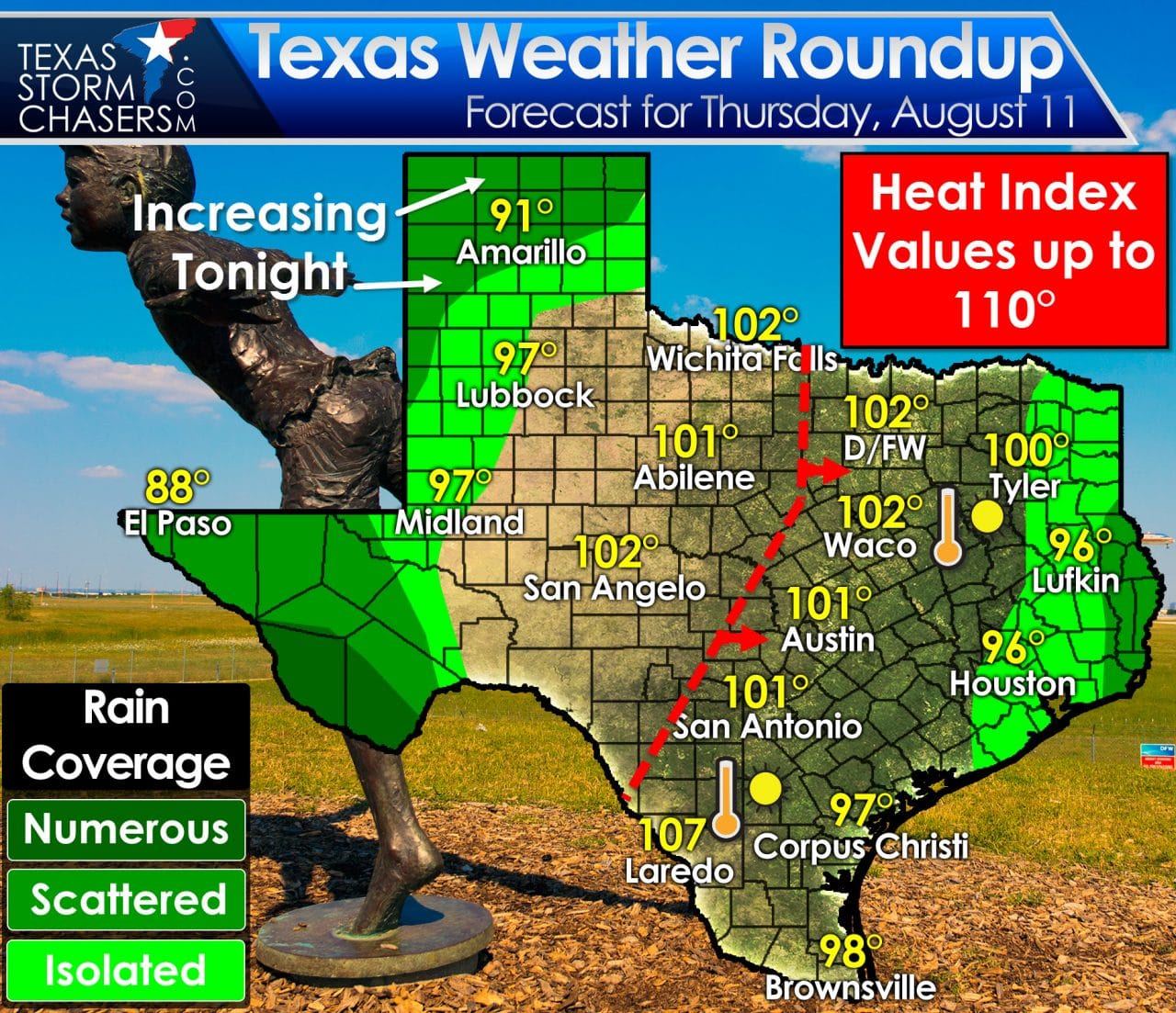Current Weather Conditions

Texas weather – As of [insert date], Texas is experiencing a mix of weather conditions across the state. Temperatures range from the mid-60s in the northern panhandle to the low 80s in the southernmost regions.
The unforgiving sun beats down upon Texas, its scorching rays leaving an oppressive heat in their wake. Yet, amidst this relentless heat, the winds whisper of a different force at play. A hurricane named Beryl swirls in the distance, its path a mystery that keeps the state on edge.
For those seeking updates on this impending storm, the hurricane beryl tracker texas provides real-time information, allowing Texans to stay informed and prepared as the weather unfolds.
Humidity levels vary from moderate to high, with some areas reporting humidity levels as high as 80%. Wind speeds are generally light to moderate, with gusts of up to 20 mph possible in some areas.
Precipitation
Precipitation has been sparse across most of Texas in recent days, with only isolated showers and thunderstorms reported in some areas. However, a cold front is expected to move through the state later this week, bringing with it the potential for more widespread precipitation.
Weather Alerts and Advisories
There are currently no weather alerts or advisories in effect for Texas.
The weather in Texas can be extreme, with hot summers and cold winters. However, the state also experiences a variety of other weather conditions, including tornadoes, hurricanes, and floods. To learn more about the texas weather , please visit our website.
| City | Temperature (°F) | Humidity (%) | Wind Speed (mph) |
|---|---|---|---|
| Austin | 75 | 65 | 10 |
| Dallas | 72 | 70 | 15 |
| Houston | 80 | 75 | 12 |
| San Antonio | 78 | 68 | 10 |
Historical Weather Patterns

Texas has a diverse climate, with average temperatures ranging from the mid-30s in the winter to the mid-90s in the summer. The state also experiences a wide range of precipitation, from less than 10 inches per year in the far west to over 50 inches per year in the east. Extreme weather events, such as hurricanes, tornadoes, and floods, are also common in Texas.
The average monthly temperature in Texas varies significantly throughout the year. In January, the average temperature is in the mid-30s. The temperature rises steadily throughout the spring and summer, reaching its peak in July and August, when the average temperature is in the mid-90s. The temperature begins to cool down in the fall, and by December, the average temperature is back in the mid-30s.
The average monthly precipitation in Texas also varies throughout the year. The state receives the most precipitation in the spring and summer months, with the peak occurring in May and June. The state receives the least precipitation in the fall and winter months, with the driest period occurring in December and January.
Extreme Weather Events
Extreme weather events are common in Texas. The state is frequently hit by hurricanes, tornadoes, and floods. Hurricanes are most common in the late summer and early fall, while tornadoes can occur at any time of year. Floods are most common in the spring and summer months.
Impact of Weather on Texas: Texas Weather
The diverse weather patterns of Texas significantly influence various aspects of life in the state, including agriculture, transportation, and tourism. Severe weather events, such as hurricanes, tornadoes, and droughts, can have profound economic, social, and environmental impacts.
Economic Impacts
- Crop and livestock losses: Extreme weather events can damage or destroy crops, leading to significant economic losses for farmers and ranchers.
- Infrastructure damage: Hurricanes and tornadoes can cause widespread damage to homes, businesses, and public infrastructure, resulting in costly repairs and rebuilding efforts.
- Disruption of transportation: Severe weather can disrupt transportation networks, including roads, railways, and airports, leading to delays and economic losses.
- Tourism decline: Hurricanes and other coastal storms can damage beaches and coastal infrastructure, impacting tourism revenue.
Social Impacts, Texas weather
- Displacement and homelessness: Hurricanes and floods can displace residents from their homes, leading to temporary or permanent homelessness.
- Health risks: Extreme heat and cold can pose health risks, particularly for vulnerable populations such as the elderly and children.
- Mental health impacts: The aftermath of severe weather events can lead to stress, anxiety, and depression among affected individuals.
Environmental Impacts
- Coastal erosion: Hurricanes and storms can accelerate coastal erosion, threatening coastal communities and infrastructure.
- Water quality degradation: Floods and heavy rainfall can contaminate water sources, leading to waterborne illnesses.
- Wildfires: Drought conditions can increase the risk of wildfires, which can cause extensive damage to forests and ecosystems.
Preparing for and Mitigating Extreme Weather
Businesses and individuals can take proactive steps to prepare for and mitigate the effects of extreme weather events:
- Develop emergency plans: Create comprehensive emergency plans that Artikel evacuation procedures, communication protocols, and safety measures.
- Secure property: Reinforce homes and businesses against high winds and flooding by installing hurricane shutters, elevating structures, and improving drainage.
- Stay informed: Monitor weather forecasts and warnings, and stay informed about potential hazards.
- Evacuate when necessary: Follow evacuation orders promptly to avoid potential danger.
